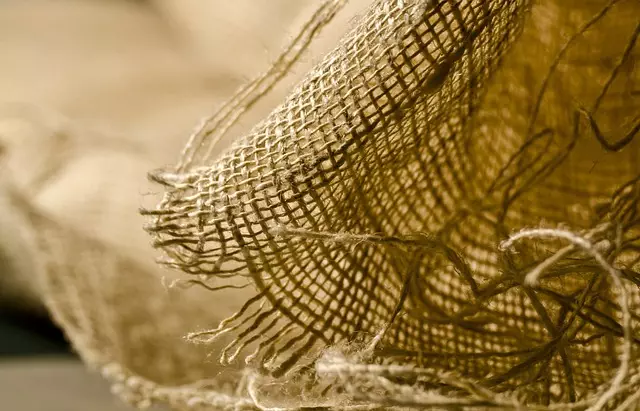The lotus flower's dried leaves hold therapeutic potential for managing joint pain, particularly in conditions like arthritis. Studies reveal that alkaloids such as 7-hydroxymitragynine and mitragynine within these leaves exhibit anti-inflammatory effects, modulating pain signaling pathways naturally. The presence of antioxidants enhances their anti-inflammatory properties, contributing to pain relief by combating oxidative stress. Additionally, kratom, a botanical substance with similar alkaloids, interacts with opioid receptors for additional analgesic benefits. This synergy suggests a promising natural approach for joint pain management. However, it's essential to consult healthcare professionals before exploring these remedies due to individual health profiles and potential interactions. The section advocates for further scientific research to understand the combined effects of these natural sources fully and to determine optimal dosages. It highlights the importance of considering a holistic approach that includes Lotus Flower Dried Leaves and Kratom as part of a broader strategy for pain relief, alongside diet, exercise, and stress management, aiming for overall health and wellness.
Exploring the natural pathways to joint pain relief, this article sheds light on the potential of lotus flower dried leaves. Known for their traditional medicinal properties, these leaves are gaining attention in modern holistic health practices. We delve into the scientific mechanisms that may explain their analgesic effects, providing readers with a comprehensive understanding of how they can be incorporated into an effective joint pain management strategy. Join us as we uncover the natural benefits of lotus flower dried leaves for joint pain relief.
- Unraveling the Potential of Lotus Flower Dried Leaves for Joint Pain Relief: An Overview
- Exploring the Mechanisms Behind Lotus Flower Dried Leaves' Analgesic Properties
- Integrating Lotus Flower Dried Leaves into a Holistic Joint Pain Management Strategy
Unraveling the Potential of Lotus Flower Dried Leaves for Joint Pain Relief: An Overview

The lotus flower, revered in many cultures for its beauty and symbolism, has long been a subject of interest in traditional medicinal practices. Its dried leaves, often overlooked in favor of the more prominent petals, harbor significant therapeutic potential. Recent studies have begun to unveil the mechanisms by which these leaves can provide relief from joint pain. The alkaloids present in the lotus flower’s leaves, namely 7-hydroxymitragynine and mitragynine, exhibit anti-inflammatory properties that are believed to be effective in reducing the inflammation associated with arthritis and other joint disorders. These compounds work by modulating pain signaling pathways in the brain, potentially offering a natural alternative to synthetic analgesics. Moreover, the antioxidant components found within the dried leaves may contribute to the overall anti-inflammatory effects, further supporting their role in alleviating joint pain.
Kratom, another botanical substance derived from the dried leaves of Mitragyna speciosa, has garnered attention for its analgesic properties. Similar to the lotus flower’s leaves, kratom contains alkaloids that interact with opioid receptors in the body, providing pain relief without the same level of risk as opioid medications. The synergy between these two natural sources holds promise for individuals seeking effective joint pain management. While further research is necessary to fully understand the combined effects and optimal dosage, the preliminary findings suggest a potential avenue for holistic pain relief that merits closer examination by both researchers and healthcare practitioners.
Exploring the Mechanisms Behind Lotus Flower Dried Leaves' Analgesic Properties

Lotus flowers, revered in many cultures for their beauty and symbolism, have long been recognized for their medicinal properties, with the dried leaves offering a range of health benefits. Among these, the analgesic properties are particularly noteworthy. Scientific research has begun to elucidate the mechanisms behind the lotus flower’s ability to alleviate pain. The dried leaves contain a variety of alkaloids, including nicotine and anesthetic substances like soporiferine and hordelenol. These compounds are believed to interact with the nervous system, modulating pain signals and reducing sensory transmission. Additionally, the anti-inflammatory effects of lotus extracts have been observed in numerous studies, suggesting that the herb may also act by diminishing inflammation, a common cause of joint pain. The analgesic action of lotus flower dried leaves is further complemented by its antioxidant properties, which help to neutralize free radicals and protect against oxidative stress that can exacerbate pain conditions.
Kratom, a plant from the coffee family, has also garnered attention for its analgesic effects. Similar to lotus flower dried leaves, kratom contains alkaloids such as mitragynine and 7-hydroxymitragynine, which are thought to bind to opioid receptors in the brain, thereby influencing pain perception. The synergy between these two natural substances could offer a compelling alternative for those seeking relief from joint pain without the side effects commonly associated with prescription pain medications. However, it is crucial for individuals considering the use of kratom or lotus flower dried leaves for pain management to consult healthcare professionals and carefully evaluate the potential benefits and risks based on individual health conditions and circumstances.
Integrating Lotus Flower Dried Leaves into a Holistic Joint Pain Management Strategy

Incorporating Lotus Flower Dried Leaves into a holistic joint pain management strategy can offer a natural alternative for individuals seeking relief from arthritis and other joint ailments. The lotus flower, revered in many cultures for its beauty and symbolism, also holds potential for therapeutic use due to its dried leaves containing alkaloids such as 7-hydroxymitragynine, which may provide pain-relieving effects. When used judiciously within a comprehensive approach that includes dietary changes, exercise, and stress management techniques, the integration of Lotus Flower Dried Leaves can complement other treatments. This multifaceted approach ensures that individuals address both the symptoms and underlying causes of joint pain, fostering an environment for holistic well-being. It is important to consult with a healthcare provider before incorporating this or any new treatment into one’s regimen, as dosage and interactions with medications can vary greatly from person to person.
Kratom, another plant-based option often discussed in the realm of joint pain relief, shares some similarities with Lotus Flower Dried Leaves in terms of alkaloid composition. The synergistic effects of combining these two natural remedies may enhance overall pain management while minimizing side effects associated with pharmaceutical interventions. A careful and measured approach is essential when utilizing both substances to ensure safety and efficacy, as individual responses can differ significantly. By embracing a holistic strategy that includes both Lotus Flower Dried Leaves and Kratom, individuals may find a more balanced and effective solution for joint pain relief. This integrative approach leverages the benefits of natural compounds while promoting overall health and wellness.
In conclusion, the exploration of lotus flower dried leaves as a potential aid for joint pain relief presents a compelling case for its integration into holistic management strategies. The overview of its therapeutic properties, coupled with an in-depth examination of its analgesic mechanisms, underscores the importance of considering this natural remedy. Users may find significant benefits when employing lotus flower dried leaves as part of a comprehensive approach to joint pain management. As future studies continue to elucidate the efficacy and optimal use of these leaves, their role in alleviating joint discomfort is poised to be further established. It is advisable for individuals interested in this alternative therapy to consult with healthcare professionals to determine its suitability for their specific needs and conditions.






